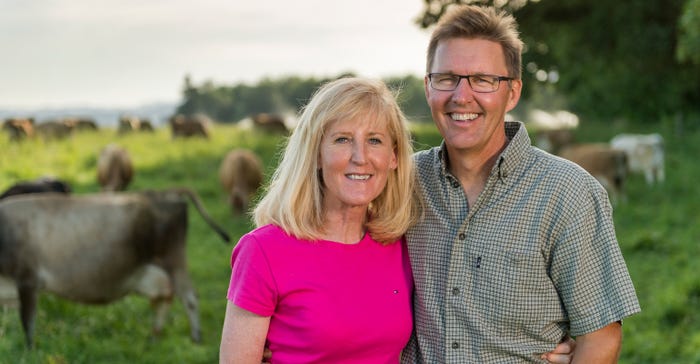
Using satellite imagery to measure plant health isn’t a new concept, especially when it comes to row crops. But Organic Valley, which has a big footprint in the Northeast, wants to use it to fine-tune pasture-based dairy management.
The cooperative is launching a pilot program this spring that will use satellite imagery to provide farmers near real-time data to support dairy herd nutrition, and protect and improve pastures.
“Rotational grazing requires farmers to measure the forage in each paddock on a regular basis, a manual and time-intensive practice,” Wade Miller, Organic Valley senior director of farm resources, said in a company press release. “Satellite photos measure the forage in each paddock remotely, greatly easing the farmer’s labor and time burden. Based on university trials, we expect our farmers will be able to capture at least a 20% increase in pasture utilization through the use of this technology.”
Three farms in Ohio, two farms in Pennsylvania and a farm in New York are participating in the trial, along with other farms around the country.
Some producers have already been testing the concept, including Jon Bansen, owner of Double J Jerseys in Monmouth, Ore. He raises 175 Jerseys and manages 600 acres, 250 of which he owns and the rest he leases. Most are in permanent forage.
He's been involved in the precursor project from Organic Valley for three years. Satellites measure plant health by detecting the amount of chlorophyll in plants — the more chlorophyll, the greener the plants are in the images.

PROMISING RESULTS: Jon Bansen, with his wife, Juli, has participated in the precursor project for three years. He says there is potential in using precision technology to measure pasture biomass, especially if it leads to more milk production.
For a corn grower, this can be useful because if less chlorophyll is measured — the images will be less greener, or even yellow — they’ll know quickly what plants are lacking nutrition or might be under some kind of stress, and they can take action.What a grazer would look for would likely be very different. In Bansen’s case, too much green is actually a bad thing because it shows too much forage for the cattle to graze. If a field is yellow, that indicates the field has already been grazed.
The next part of the trial, he says, will go further by measuring the actual amount of biomass and finding out what pasture mixes, and at what amounts, can generate more milk production.
"The potential here is the fine-tuning to a pasture situation," Bansen says. "So it's going to be really interesting for me to see this fine-tuning, what additional information I can get out of the pastures out in my fields. What I see on the satellite imagery really correlates with what's going on in my milk tank. At the end of the day, it's about being the most efficient for providing the cow with nutrition.”
His cows’ rolling herd average is 13,000 pounds, 715 pounds butterfat and 575 pounds protein. He milks in a double-six herringbone parlor.
He transitioned to strictly grass-fed milk production three years ago to take advantage of better prices for organic grass-fed milk. The key to making it work, he says, is feeding perennials that have lots of energy.
"It really works as long as you feed the cows what they need under that circumstance and, you know, that's a really mixed stand of perennial forages," Bansen says, adding that some of his fields have more than 20 species of perennials.
The herd is outside all summer. In winter, they spend most of their time in a freestall barn where they feed on free-choice alfalfa or silage. The mild winters in his area allow him to cut a lot of forage early — 2,000 bales — for wintertime feed.
For Bansen, the first three years of the trial were useful.
“You could see a field that's slow to bounce back, and that might mean we needed to get more nutrients on there," he says. "It also shows you where you have weak stands, so maybe you need to go in and no-till something in there, some forages. It also showed me where the irrigator was missing lines in the fields. There were a lot of things to be seen. It's definitely precision farming. It definitely lets you manage a lot easier.”
“Through this pilot program, we will test the technology on a cross section of farms nationwide in 2021, and will make it available to all Organic Valley farms in 2022,” Miller adds.
About the Author(s)
You May Also Like






